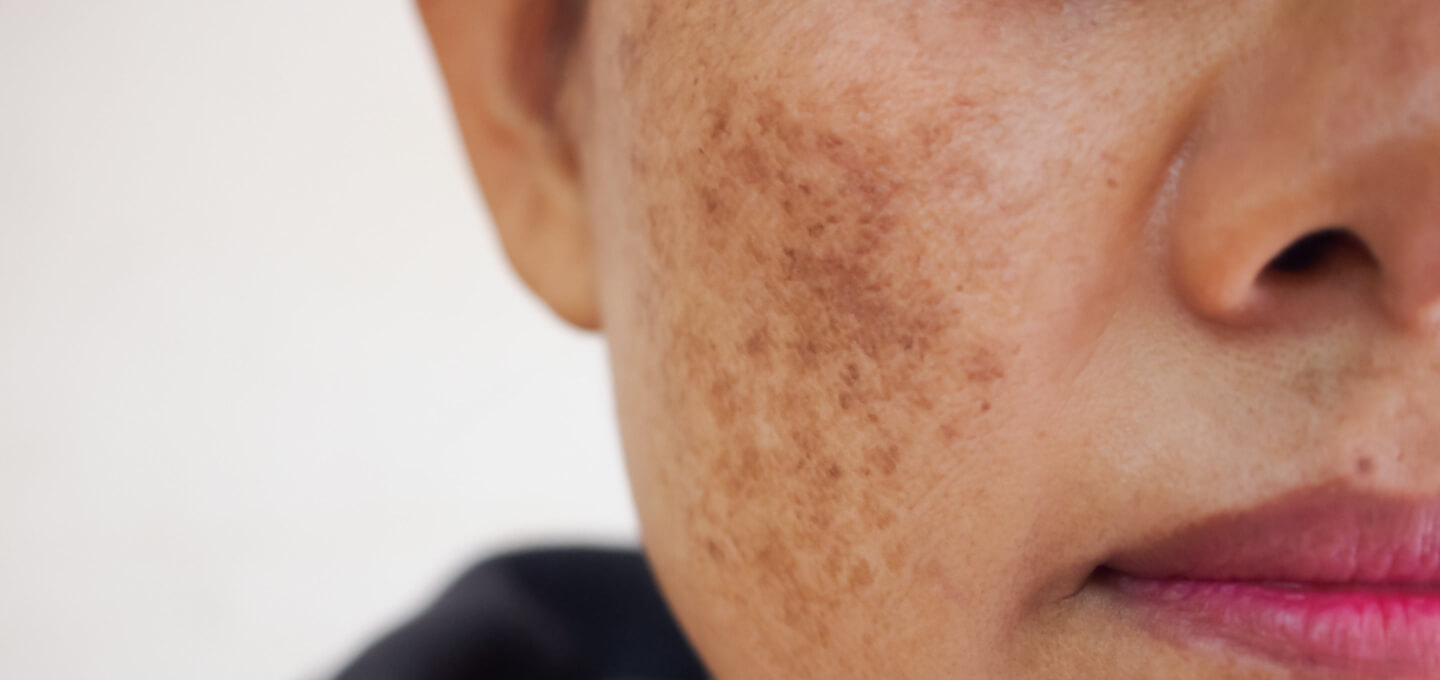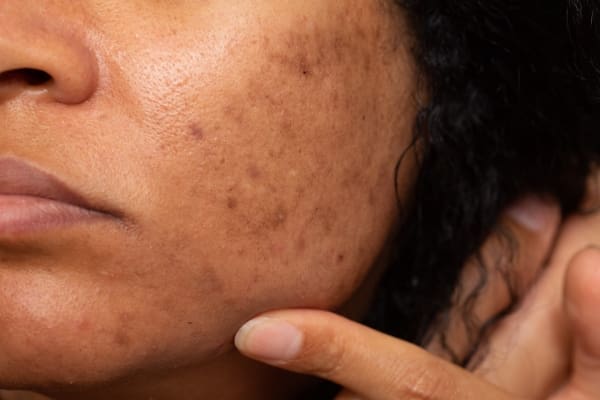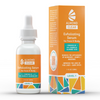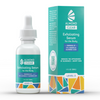What Causes Hyperpigmentation and How to Get Rid of It
Imagine you are looking in the mirror and getting ready for your day. As your reflection shines back at you, you notice that an uneven skin tone with areas of your skin that are darker and discolored compared to the rest. For some of you, this may not need any imagination; on the contrary, it may be a skin concern you’ve had for a while with no answers. There’s a chance that what you are experiencing is called hyperpigmentation. So, what causes hyperpigmentation, and how do you eliminate it? Let’s dive into these questions and help you achieve a brighter and more even skin tone.
What is Hyperpigmentation
Hyperpigmentation is a common skin condition that happens when a portion of your skin appears darker than the rest. The good news is that you are not alone! This skin concern is widespread and can affect all skin types. It occurs when your skin produces more melanin than usual. Melanin is the natural pigment that gives color to our skin, hair, and even our eyes.
What are The 3 Types of Hyperpigmentation?
Before looking into ways to treat your skin, it’s essential to understand what type of hyperpigmentation you are dealing with. The primary types are melasma, post-inflammatory hyperpigmentation, and age/sun Spots.
Melasma

Melasma is a form of hyperpigmentation that causes darkened skin patches. This skin concern, also known as chloasma, most commonly appears on the forehead, cheeks, nose, and around the mouth. Less common areas for melasma include the neck, forearms, or stomach.
Melasma usually affects women experiencing hormonal changes such as pregnancy or taking birth control. During pregnancy, the natural hormones in our bodies stimulate the melanin that produces cells in the skin's deepest layer. As a result, melanin production increases. According to the International Dermal Institute, between 10 and 25 percent of women taking birth control pills experience melasma.
Melasma often fades on its own after hormones return to their regular levels. If the skin remains discolored, it’s best to speak to a dermatologist. Long-term melasma does not respond well to home remedies or over-the-counter treatments. Dermatologists may recommend doing a chemical peel or using prescription-strength hydroquinone.
Post-inflammatory Hyperpigmentation

Post-inflammatory hyperpigmentation(PIH) is an indication of previous skin trauma. This skin concern presents itself following a skin injury or in people with inflammatory conditions. PIH appears as a skin response to the overproduction of melanin when the skin tries to recover from injuries or inflammation. It can appear anywhere on the body, especially in UV-exposed areas, as spots or dark patches of darkened skin. Some common triggers are skin conditions such as eczema and psoriasis or acne, burns, and cuts. A common form of PIH is dark acne scars. The discoloration varies from shades of pink, red, brown, and sometimes black. Additionally, it is common in people with darker skin tones.
Age/Sun Spots
 Age spots, commonly known as liver spots, occur over time following excessive sun exposure. The brown, tan, or black spots typically appear on the face and hands. However, they can also appear in other sun-exposed areas throughout the body. Older adults experience this type of skin discoloration. Their overexposure to the sun increases melanin production, causing the small discolored dark patches/spots to appear.
Age spots, commonly known as liver spots, occur over time following excessive sun exposure. The brown, tan, or black spots typically appear on the face and hands. However, they can also appear in other sun-exposed areas throughout the body. Older adults experience this type of skin discoloration. Their overexposure to the sun increases melanin production, causing the small discolored dark patches/spots to appear.
How to Get Rid of Hyperpigmentation
The great news is that most hyperpigmentation is treatable with various approaches. Hyperpigmentation treatments include a consistent skin care regimen, home remedies, over-the-counter medicines, and professional skin treatments.
Different types of hyperpigmentation vary in how easily they fade. PIH and sun damage-related spots are typically easier to treat than age spots and melasma. PIH and sun spots often fade over time, especially with gentle skin care and consistent sun protection.
Age spots (lentigines) and melasma can be more stubborn and might require professional treatments such as laser therapy or chemical peels for noticeable differences.
Daily Skincare Products
You can get great results with fading dark spots by being consistent with products targeting hyperpigmentation over time. Specifically, Alpha Hydroxy Acids (AHA) will be your best friend in treating discoloration. Products containing AHAs get the job done by shedding the top layer of old skin cells and dissolving the glue-like lipids that hold cells together. They also interfere in the production of melanocytes, the pigment-forming cells. As a result, the skin produces more cells and increases cell turnover, revealing brighter complexions.
Some familiar and popular AHAs are glycolic and lactic acid. While somewhat effective, these acids are not the best choices. Glycolic acid is very strong and drying, and most people can’t tolerate using it daily. Lactic acid is incredibly gentle, but in fact, it’s so mild that it doesn’t produce strong results. So, let’s talk about mandelic acid, the AHA derived from bitter almonds. This ingredient is unique because it’s both gentle and effective. Mandelic acid fades dark spots and exfoliates dead skin with minimal redness, skin irritation, or excessive drying.
This key ingredient completely powers Almond Clear’s product line and has proven to help people treat their hyperpigmentation. A simple skincare routine of their products includes using the Face & Body wash, followed by the Level 1 Exfoliating Serum (for the face) or the Level 2 Exfoliating Serum (for the body). Following up with a moisturizer is essential because dry skin can cause hyperpigmentation to darken. Almond Clear’s Soothing Daily Moisturizer soothes and calms the skin, and its Hydrating Gel is an excellent choice for those with oilier skin.
Applying a Vitamin C serum after using mandelic acid is safe and effective for treating hyperpigmentation. The combination of active ingredients packs a punch for brightening the skin.
A Hydroquinone cream is also potent because it is a topical skin-bleaching agent. Because of its depigmentation abilities, it is very popular in treating Melasma. However, Hydroquinone is a strong chemical and should be used with caution, following all directions carefully
Home Remedies for Hyperpigmentation
Using natural ingredients and creating home remedies can lighten hyperpigmentation mildly. While home remedies can’t get the same results as treatments like mandelic acid and other AHAs, they can be a good starting point. According to Healthline, aloe vera, Green Tea Extract, and Licorice extract can be mildly effective.
Aloe vera contains a natural depigmenting compound called aloin that can brighten hyperpigmentation. To use it as a home remedy, apply pure aloe vera to pigmented areas before sleep. Rinse the substance off your body with warm water the following morning. Stay consistent and repeat this application daily until you notice an improvement in your discoloration.
Research from PubMed Central revealed that green tea extract could have a depigmenting effect. If using a green tea bag, boil the bag for three to five minutes. Remove the tea bag from the water and rub it over the discolored patches on your skin after it cools. For optimal results, repeat twice a day until you notice the desired results.
Finally, topical creams containing licorice extract are available over the counter and can be used to lighten hyperpigmentation. It is important to follow instructions on the packaging for optimal results.
Professional Skin Treatments
Professional treatment options performed by a qualified dermatologist could help achieve the desired results for stubborn hyperpigmentation. Chemical peels, laser treatments, microdermabrasion, and microneedling are all fantastic options for lightening and reversing discoloration from sun damage and hyperpigmentation. It is important to note that most of these treatments require multiple sessions to achieve the desired results.
Chemical peels work by applying an acid solution to the skin. Your skin then produces a controlled wound that, with time, peels off, revealing new skin.
Laser treatments, such as laser peels and resurfacing, use targeted beams of light to reduce hyperpigmentation. Intense Pulse Light Therapy is another popular laser treatment that stimulates collagen growth.
Microdermabrasion does not penetrate as deep as other treatments but is effective at treating superficial scarring and hyperpigmentation. The skin tool brushes across the skin, removing the epidermis.
Finally, Microneedling is a minimally invasive treatment that uses a device containing fine needles to create “micro-wounds” on the skin’s surface. These wounds stimulate the body’s production of collagen and elastin, revealing brighter and firmer skin after healing.
When to See a Healthcare Provider
In some cases, it may be necessary to see a healthcare provider. For example, if the hyperpigmentation worsens or does not improve with over-the-counter treatments, it is important to speak to a professional. Other examples are if your hyperpigmentation appears suddenly and spreads quickly. Specialists can also provide medical advice, prescribe topical creams, and help determine if you are experiencing an underlying health or medical condition.
How to Prevent Hyperpigmentation?
Some cases of hyperpigmentation can not be prevented, but there are steps we can take to prevent specific instances:
- Protect your skin barrier with sunscreen - A SPF30 or higher is a great preventative measure because direct sunlight can darken hyperpigmentation. So, wearing sunscreen daily to protect your skin from UV rays is essential.
- Stay consistent with your skincare routine - Clearer and brighter skin does not happen overnight. Results can take weeks to notice, but don’t give up! Stay consistent and trust the process.
- Address underlying health issues - It’s important to get reassurance from a medical professional to determine if your hyperpigmentation results from a health issue.
Skincare Tips For Hyperpigmentation
Here are some easy and efficient tips if you are dealing with hyperpigmentation.
- Gentle Cleansing: Wash your face and body with a mild cleanser. Avoid using hot water, as it can irritate your skin and make hyperpigmentation worse. It’s also important to avoid harsh scrubbing. When building your skincare lineup, always look for cleansers formulated for sensitive skin. Almond Clear’s Face and Body wash is an excellent choice because it is gentle and safe for daily use. Avoid products with harsh chemicals or fragrances.
- Exfoliate regularly: Proper exfoliation is often crucial to improving the appearance of hyperpigmentation. Finding a product that is not harsh and abrasive is essential for optimal results. Our Level 1 Exfoliating Serum is powered by mandelic acid and is safe to use every day without worries of irritation. If you are experiencing discoloration on your body, the Level 2 Exfoliation Serum is a better option.
- Moisturize properly - Moisturizing your skin after using an exfoliant will improve the appearance of hyperpigmentation by maintaining skin hydration. When shopping for moisturizers, buying products with non-comedogenic ingredients is essential. Our Soothing Daily Moisturizer is gentle, soothing, and calming. It has natural ingredients and works great at combating excessive dryness caused by exfoliation. If your skin is oilier, then try out our Hydrating Gel.
Key Takeaways
- Hyperpigmentation is a common skin concern typically characterized by darker spots/patches caused by excess melanin production.
- Melasma, Post-inflammatory hyperpigmentation, and age/sun spots are the three primary types of hyperpigmentation.
- Mandelic acid is a gentle but powerful Alpha Hydroxy Acid that can treat hyperpigmentation. Home remedies like aloe vera gel and professional treatments like chemical peels are great additions for optimal results.
- If your hyperpigmentation worsens or spreads quickly, seek medical advice.








